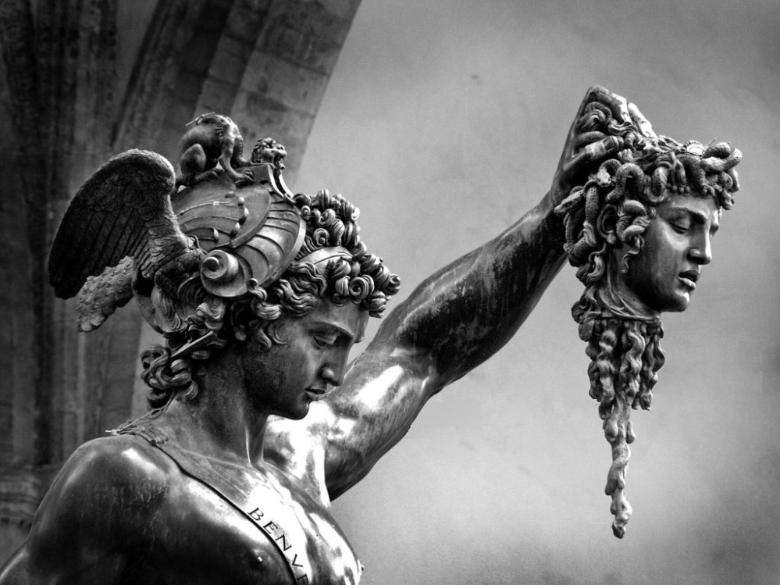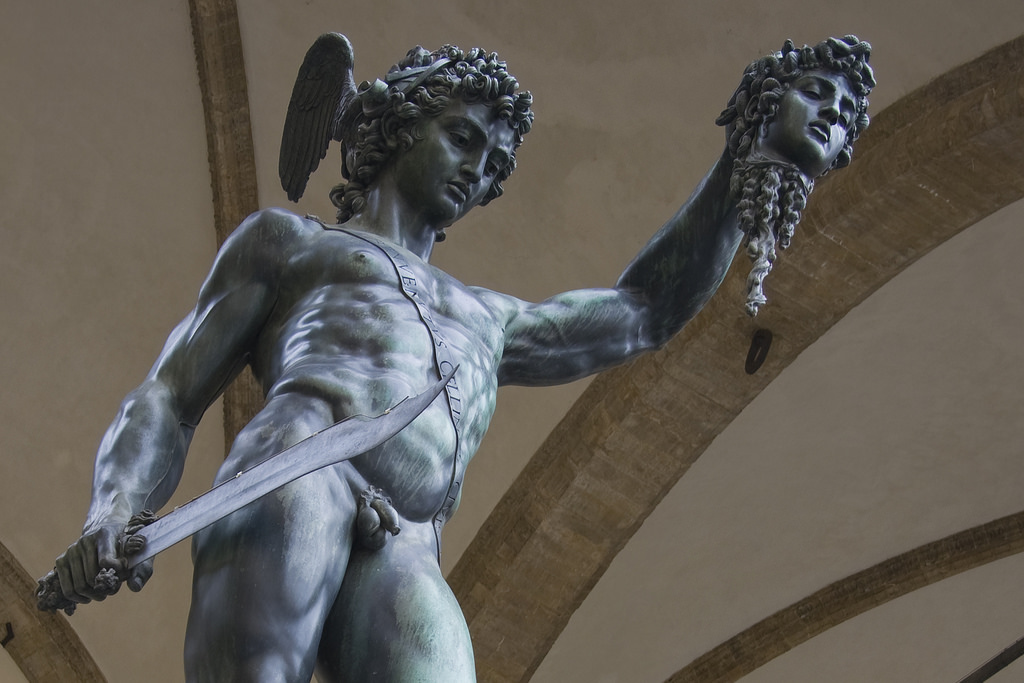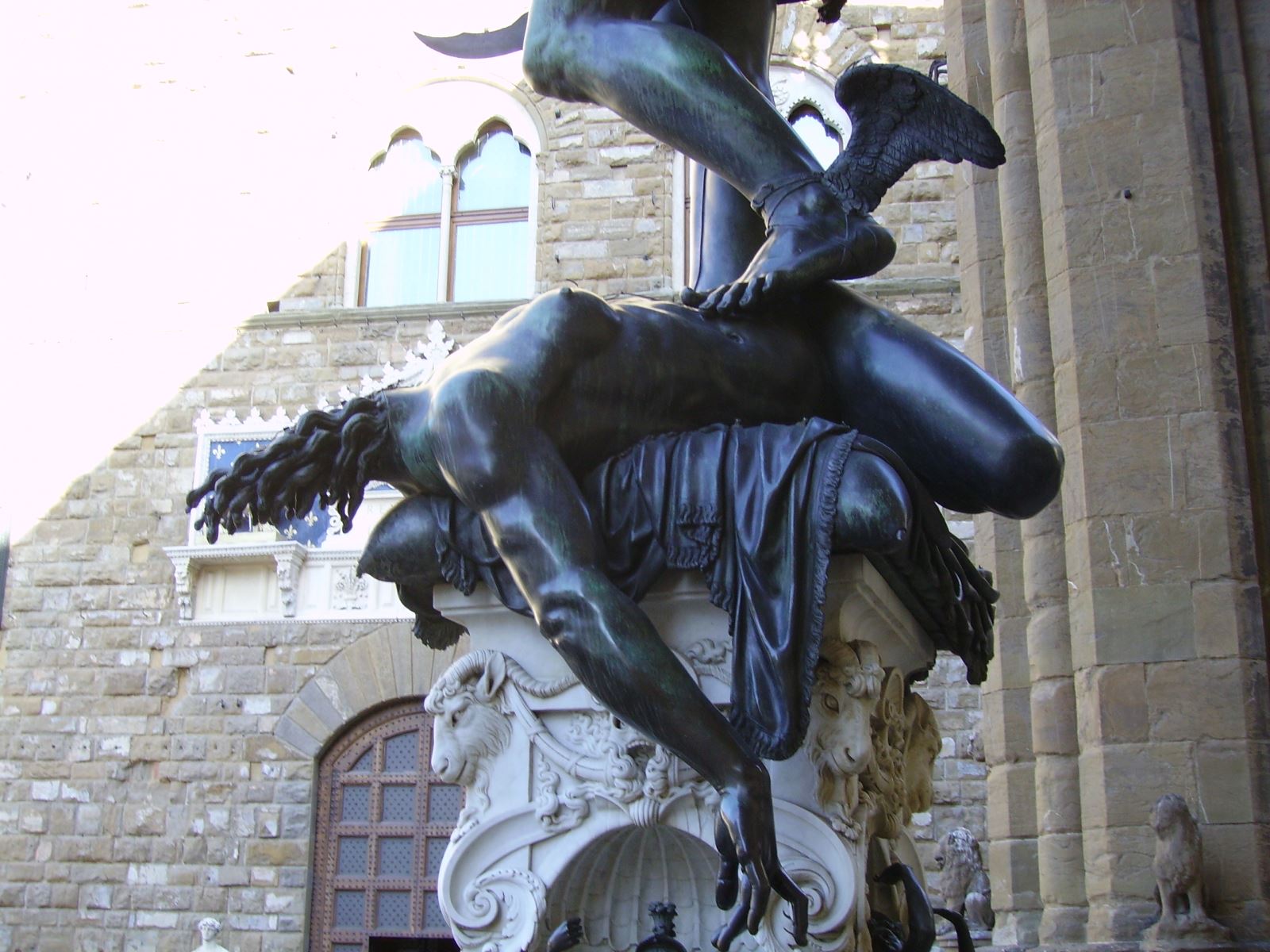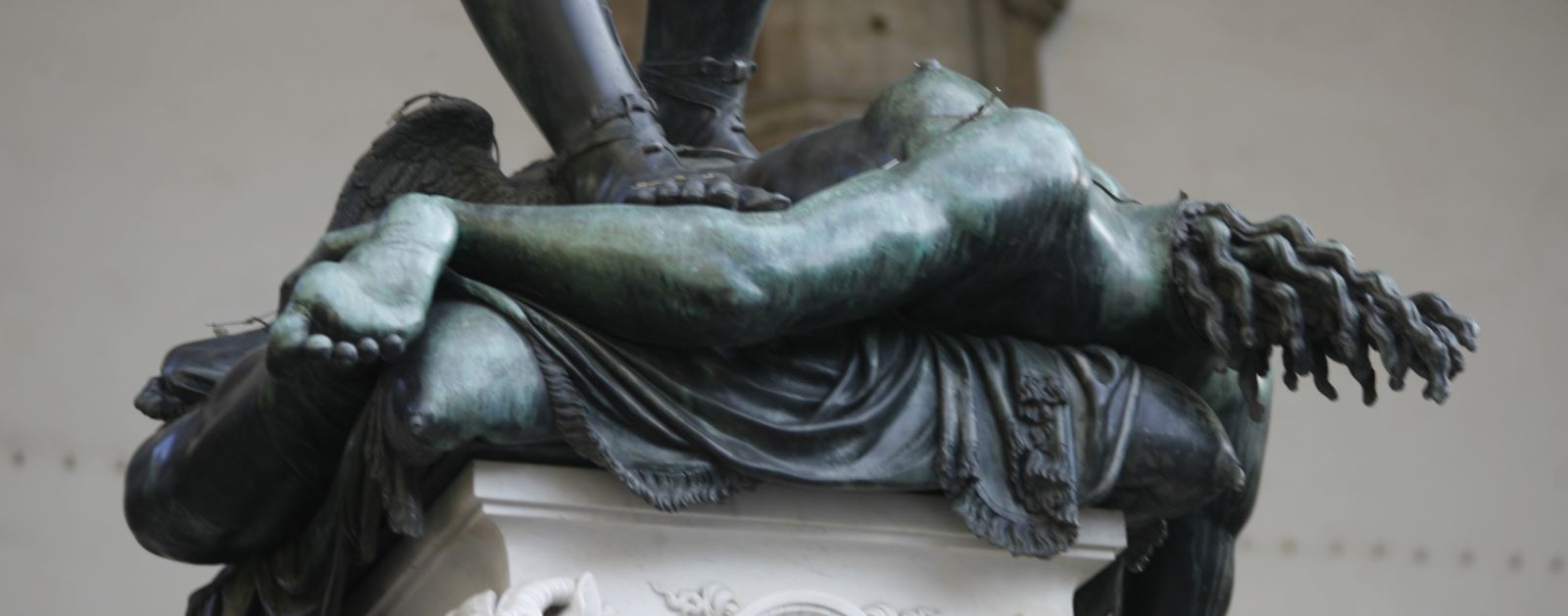The sculpture stands upon a square base with bronze relief panels depicting the story of Perseus and Andromeda, similar to a predella on an altarpiece. It is located in the Loggia dei Lanzi of the Piazza della Signoria in Florence, Italy.

The second Florentine duke, Duke Cosimo I de’ Medici, commissioned the work with specific political connections to the other sculptural works in the piazza. When the piece was revealed to the public on 27 April 1554, Michelangelo’s David, Bandinelli’s Hercules and Cacus, and Donatello’s Judith and Holofernes were already erected in the piazza.

The subject matter of the work is the mythological story of Perseus beheading Medusa, a hideous woman-faced Gorgon whose hair was turned to snakes and anyone that looked at her was turned to stone. Perseus stands naked except for a sash and winged sandals, triumphant on top of the body of Medusa with her snakey head in his raised hand. The body of Medusa spews blood from her severed neck. The bronze sculpture and Medusa’s head turns men to stone and is appropriately surrounded by three huge marble statues of men: Hercules, David, and later Neptune. Cellini breathed new life into the piazza visitor through his new use of bronze in Perseus and the head of Medusa and the motifs he used to respond to the previous sculpture in the piazza. If one examines the sculpture from the back, you can see the self-image of the sculptor Cellini on the backside of Perseus' helmet.

Perseus in Greek mythology was the founder of Mycenae and was the great Greek hero and slayer of monsters before the days of Heracles. He beheaded the Gorgon Medusa and then went on to save Andromeda from a sea monster. He was the son of Zeus and the mortal Danaë, as well as the great-grandfather of Heracles.

Perseus avoided looking at Medusa face and turning to stone, by viewing Medusa’s reflection in his polished shield, in this way he safely approached and cut off her head.

Medusa was a monster, described as a winged human female with living venomous snakes in place of hair. Anyone who looked onto her face would turn to stone. Medusa was beheaded by the hero Perseus, who after that used her head, which retained its ability to turn onlookers to rock, as a weapon until he gave it to the goddess Athena to place on her shield.
The sculpture is thought to be the first statue since the classical age where the base included a figurative sculpture forming an integral part of the work.
According to wikipedia.
Phuong Thu Tran (editor) – ASEAN Records Organization (aseanrecords.world) (Source of photos: internet)




![[HONORARY DOCTORATE OF RECORD FOR PRACTICE AND EMPIRICAL RESULTS – 2017] LY THI MAI (HO CHI MINH CITY, VIETNAM)](https://aseanrecords.world/wp-content/uploads/2024/04/0_16-27_jpg_751-218x150.jpg)








